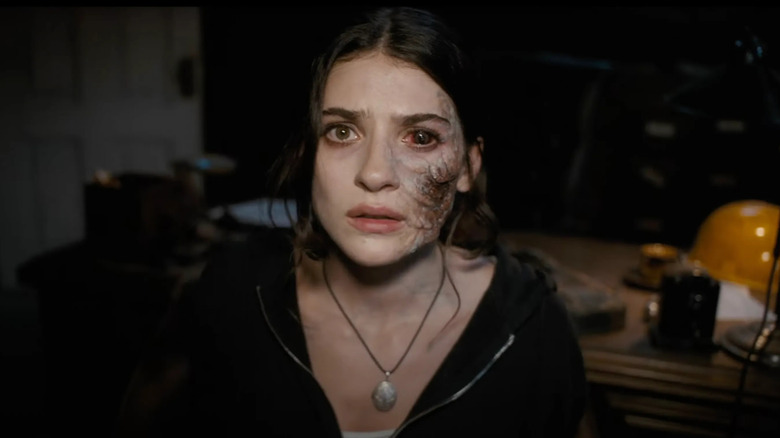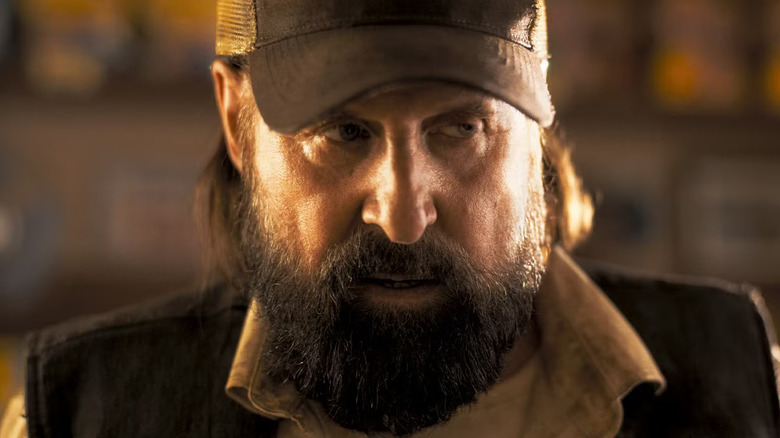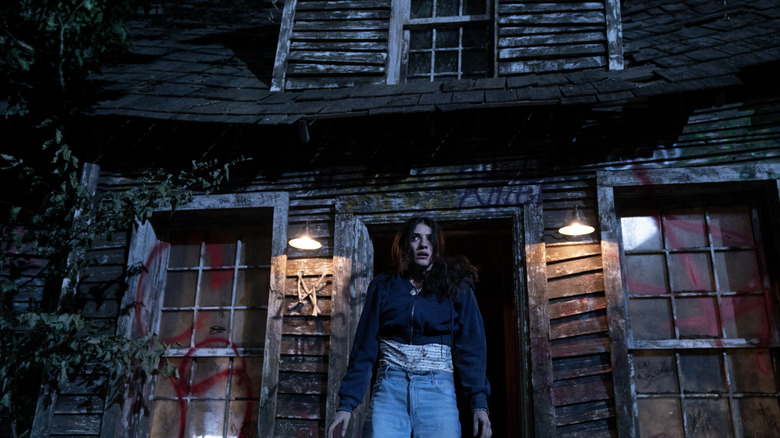Until Dawn Director David F. Sandberg Had To Convince His Colleagues To Attempt In-Camera Special Effects [Exclusive]
Ever since the advent of CGI, genre movies — sci-fi, fantasy, and horror films, in particular — have enjoyed an exponential leap forward in terms of their ability to depict all manner of imaginative places and beings. To be clear, the work that goes into creating everything from "Kingdom of the Planet of the Apes" to "Dune: Part Two" is considerable, whether or not the majority of the work is being done with computers. It's certainly true that the actual work that digital artists, animators, rotoscopers and the like do is hard to grasp in layman's terms; just look at a comment section for any given trailer for an upcoming blockbuster, and you'll see some form of "the CGI looks so bad" sentiment, posted by someone who assumes that these effects are done with little more than a few mouse clicks and keystrokes. One of the drawbacks of filmmaking becoming so dependent on digital artistry is that the discussions of and descriptions for the work are still too obtuse for the average person.
However, another major drawback for the mass exodus to digital effects is that the practice, seen generally as a cost-saving measure by producers (whether or not that's actually true, and whether or not the digital artists are being paid fairly), has led to near-obsolescence of old-school methods of visual effects. Aspects of the effects world that used to be ubiquitous, such as matte paintings and miniature model-making, are now a dying art.
One aspect that's managed to survive, thankfully, is the art of prosthetic special effects makeup, especially when it comes to gore gags in horror films. Although it's possible to enhance a kill with digital effects, the visceral impact of having something physical in-camera that an audience can see can't be denied, and numerous horror filmmakers (not to mention fans) have sung the praises of practical effects for decades now. Yet practical blood and gore are only part of the horror filmmaker's toolbox, and a lot of the other tools have gone unused for years now. Fortunately, David F. Sandberg, director of this month's spook-a-blast "Until Dawn," made an effort to include a number of inventive in-camera special effects in the film, and as he told me in a recent interview, it required a little bit of explaining in order to convince his colleagues that these techniques were the best way to go.
Until Dawn was a chance for Sandberg to indulge his love of all aspects of horror
One of the standout aspects of the "Until Dawn" movie is that, although it's nominally an adaptation of the video game of the same name from 2015, Sandberg, along with writers Gary Dauberman and Blair Butler, chose to not simply remake the game for the big screen. Part of the reason for this is how cinematic the video game already was, featuring the motion-captured performances of actors like Hayden Panettiere and Rami Malek. Additionally, the branching narrative paths of the game meant that a movie remake of it would be required them to choose a pre-set path, risking potentially alienating fans who played the game differently. Thus, an adaptation of the game's tone was a savvier way to go. Both the game and the movie involve the subtext of asking the viewer what they might do were they stuck in one of several horror movie scenarios; the film just addresses this more obliquely.
The biggest draw for Sandberg to the film beyond this subtext is the fact that its unique structure and inclusion of numerous monsters and subgenres would allow him to flex his horror fan muscles in a way they hadn't been before. As he elaborated during our interview:
"In this movie, one of the things [I enjoyed] in particular was a chance to go all out with practical effects and monsters and all these things that I've been wanting to do forever, because even in the previous horror movies I'd done, they've been sort of supernatural and not as gory, or not as much. So this was a real chance to finally let all that out and get to experience all these things and try on genres I haven't worked in before, like slasher or found footage and these things."
As a horror fan, Sandberg saw making "Until Dawn" like being a kid in a candy store, and that exuberance for the genre and the nearly blank creative check he enjoyed on the film can certainly be seen in the movie itself.
Sandberg assured his colleagues that they could do a bunch of effects in-camera
"Until Dawn" is far from the only evidence of Sandberg's love of filmmaking. Over his career, the director has taken it upon himself to produce a series of instructional and behind-the-scenes videos which detail his personal process and the various tech and techniques that he likes to use. He's even made just such a video about "Until Dawn" prior to the film's release.
Entitled simply "The Practical FX Approach in Until Dawn," the short details several of the many in-camera effects techniques and tricks he employs within the movie. A lot of these gags come down to pure filmmaking savvy and know-how, and barely cost anything to pull off. Despite their relative cheapness, it seems Sandberg did have to put a little effort into convincing his visual effects team and the studio to utilize these techniques, if for no other reason than such things aren't typically done that way these days. As Sandberg explained:
"I know there were some things where in pre-production going through, especially when we're talking to the VFX vendor and with the people here at Sony, it was like, 'Well, of course this is going to be visual effects,' and you had to go like, 'No, we can do it this way.' And 'Well, this is going to be a visual effect. It always is.' It's like, 'No, I think we can actually do it this way.' So I mean, the approach was to try and take practical [effects] as far as possible, and then we still had VFX in our toolbox if needed. But it is something very satisfying and very fun when you can come up with those almost like magic tricks and ways of doing it in camera, and save the VFX for [things like] the wires and the boom shadows and things like that."
In order to check out for yourself what's practical and what isn't in the finished film, "Until Dawn" is in theaters everywhere now. To listen to my exclusive interview with Sandberg and Dauberman, check out the latest episode of the /Film Daily podcast:
You can subscribe to /Film Daily on Apple Podcasts, Overcast, Spotify, or wherever you get your podcasts, and send your feedback, questions, comments, concerns, and mailbag topics to us at bpearson@slashfilm.com. Please leave your name and general geographic location in case we mention your e-mail on the air.


